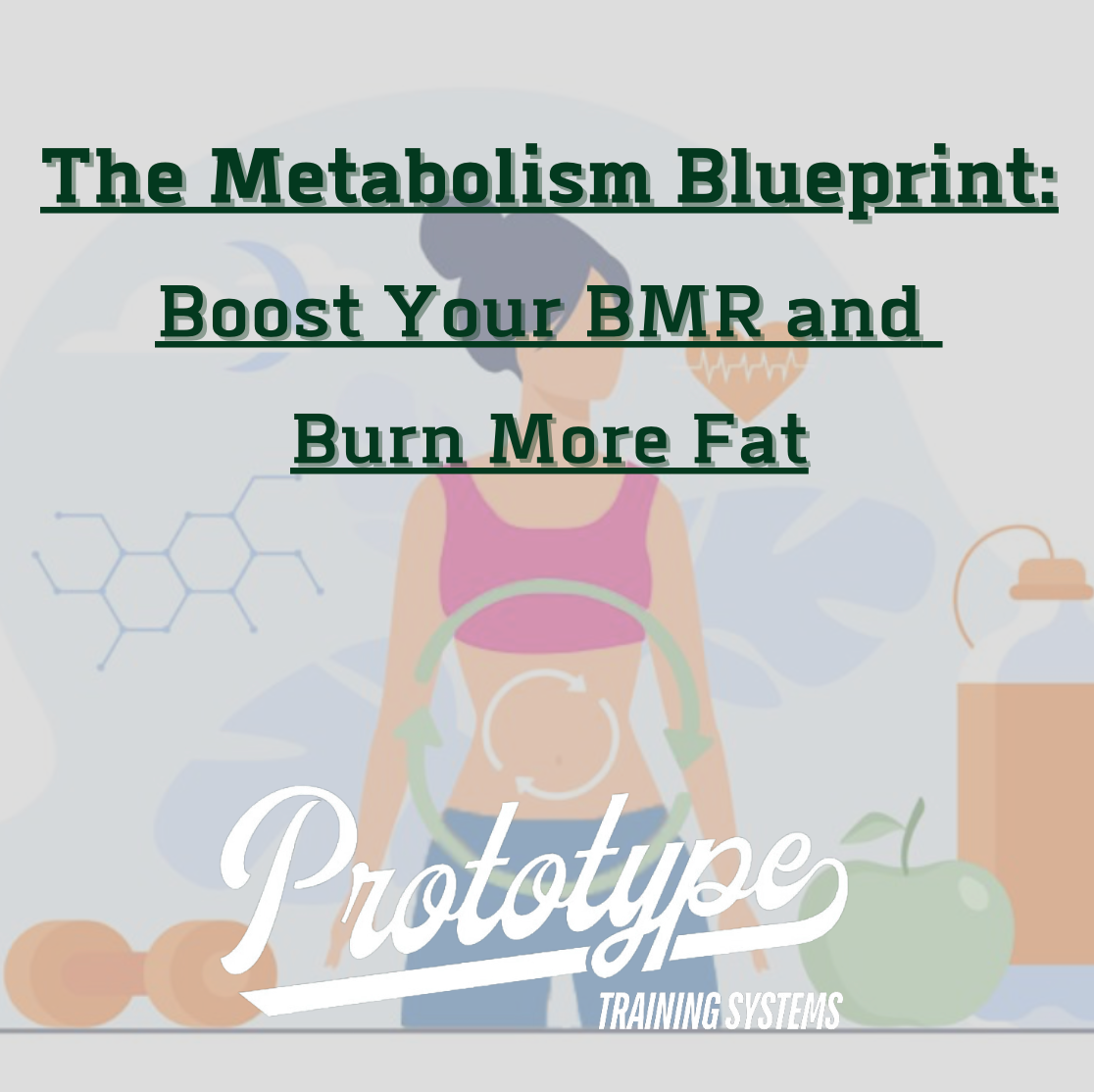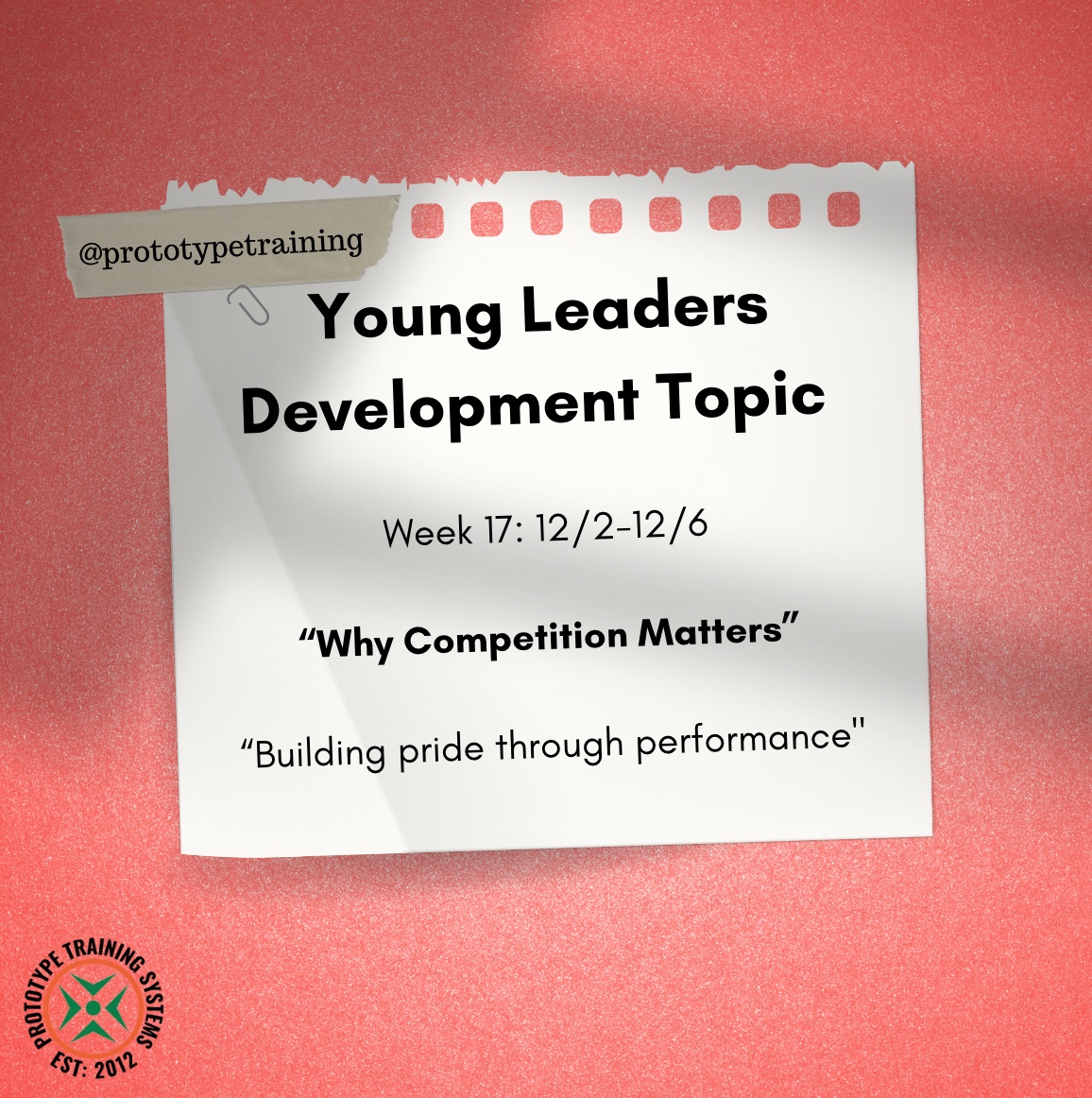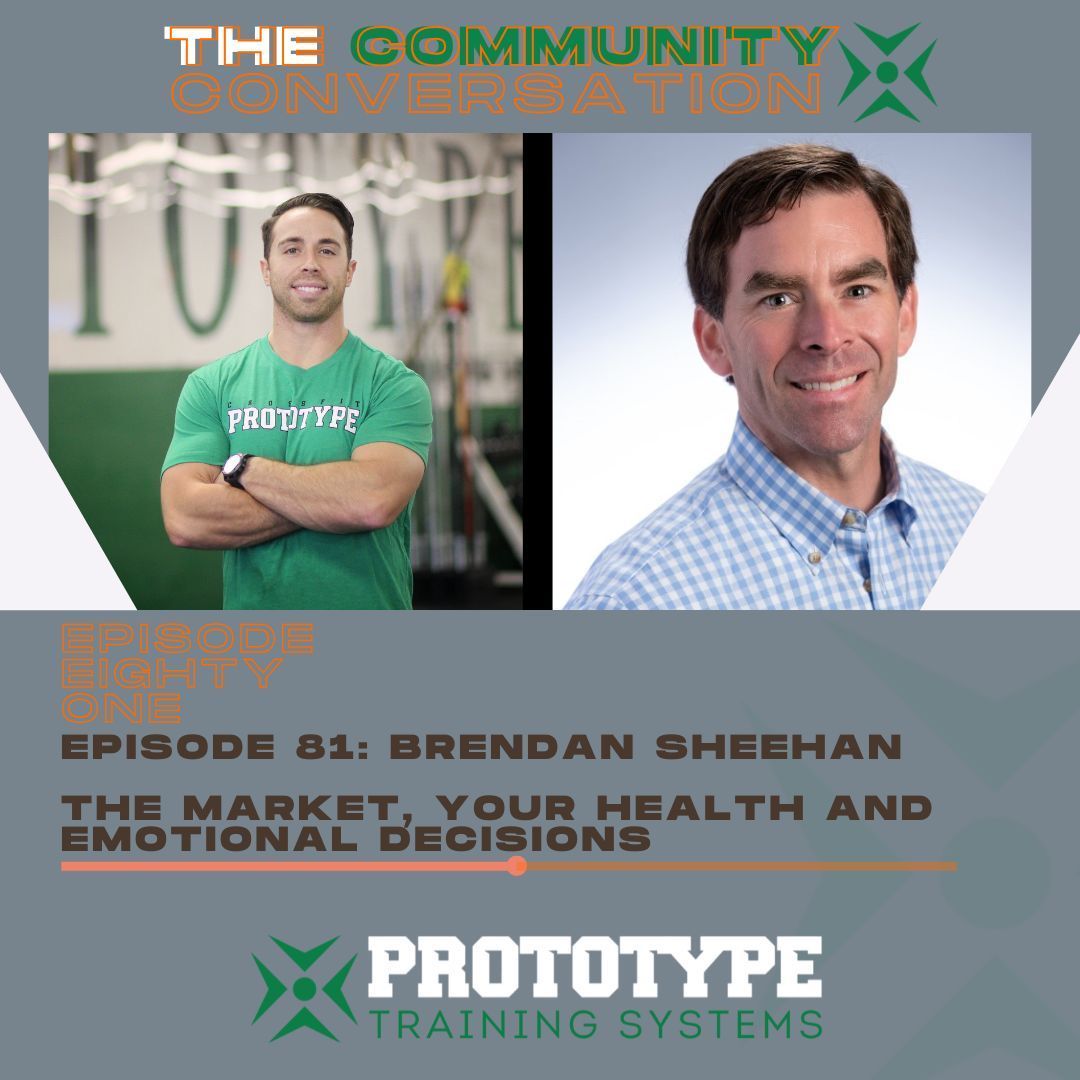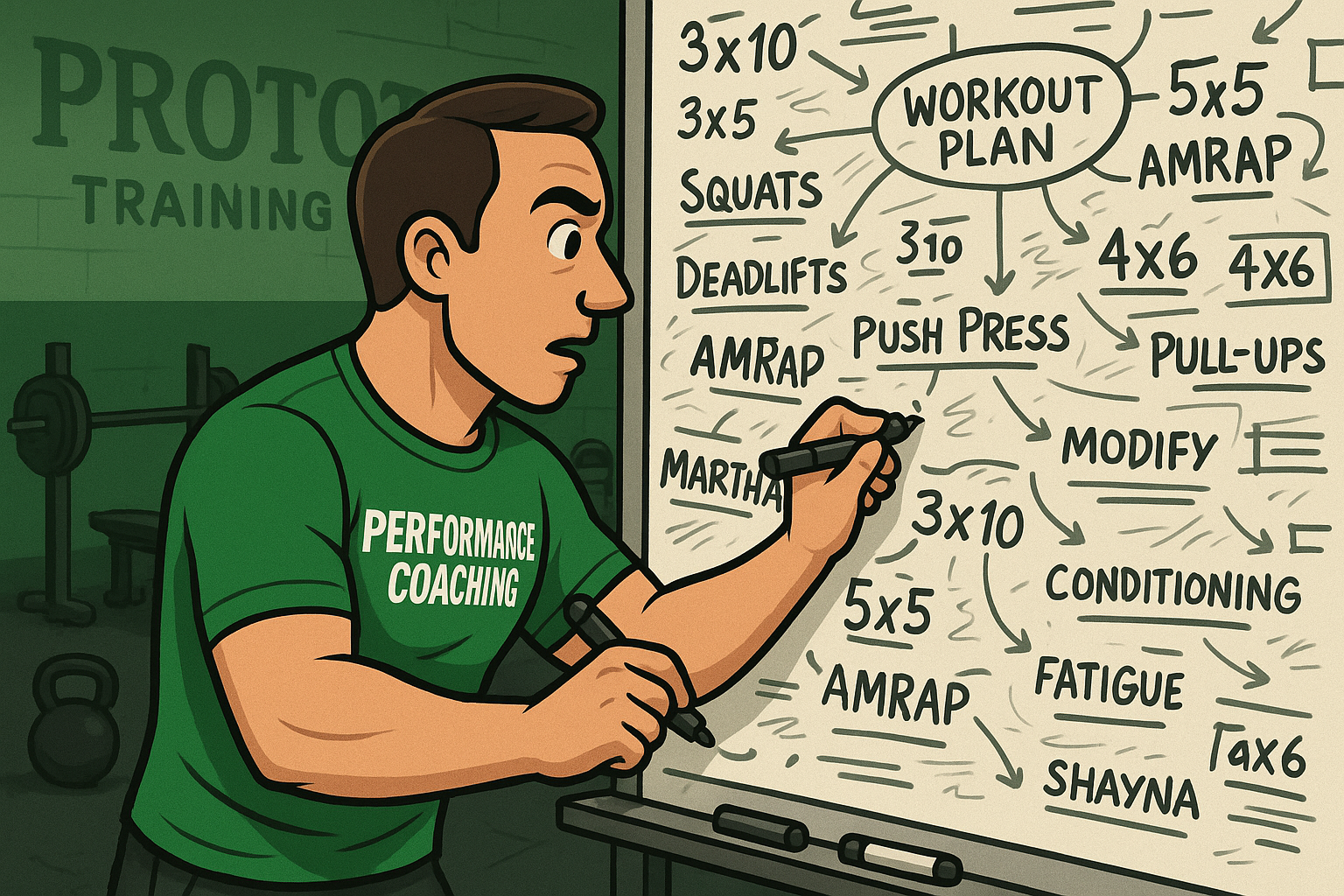The Metabolism Blueprint: Boost Your BMR and Burn More Fat
Mike Collette • January 23, 2025
The Metabolism Blueprint: Boost Your BMR and Burn More Fat

I recently went to Healthspan-Longevity (HL) in Westborough MA, and met with the owner Jason. At HL, they have all the testing equipment to give you the current data on your health… from DEXA body composition testing, to VO2 max, to sleep quality testing and much more.
Jason put us through a DEXA scan. A DEXA scan, or dual-energy X-ray absorptiometry scan, is a non-invasive procedure that measures bone density and body composition (body fat, lean mass). In addition to this information and many more data points, it gives an estimate of what your BMR (Basal Metabolic Rate) is. Your BMR, also called your RMR (resting metabolic rate), is essentially how much energy you burn at rest.
There is a lot I can share about the results of the DEXA scan, but it got me thinking to share more about the importance of BMR and how many people look at fat loss in the wrong way. In essence, why focusing on dialing this up can have the biggest return for you.
As you continue to read, I want to break down why BMR is important, how it works, why it changes over time, and what you can do to improve it.
(5 minute Read)
What is BMR?
Think of your body as a car engine that's always running, even when you're not moving. This constant running uses fuel (energy) to keep vital parts working, like your heart beating and lungs breathing. The amount of energy your body uses at rest is called the Basal Metabolic Rate (BMR). It's the number of calories (energy) your body needs to keep all its basic functions going while you're at rest.
Another way to think of this is to imagine your body is like a money-making machine, and burning calories is like earning money. Most people think you only make money (burn calories) when you're actively working—like running, lifting weights, or exercising. But the truth is, the biggest chunk of your earnings comes from your machine running in the background all the time. This is your BMR—the money you make just for being alive.
Now, here’s the catch:
the more you invest in building your machine (your body), the more money it makes for you even when you're doing nothing—like sleeping or watching TV. Building muscle is like upgrading your machine so it burns more calories (makes more money) without extra effort. This is why working out isn’t just about burning calories during the workout—it’s about making your machine more powerful so it earns more for you over time.
Think of exercise and training as the investment you make to grow your BMR. While it’s true that you burn some calories (money) during exercise, the real payoff comes from the extra calories your body burns afterward, thanks to the stronger, upgraded machine you’ve built. That’s why strength training and muscle-building activities are so important—they're like putting money into a savings account that keeps growing.
So, instead of focusing only on how much you burn during a workout, think about how that workout invests in your future calorie burn. By training to build your BMR, you're setting yourself up to burn more calories 24/7—even while you're asleep!
How Do We Measure BMR?
To find out your BMR accurately, scientists can measure how much oxygen you breathe in and how much carbon dioxide (CO₂) you breathe out. This is because when your body uses energy, it consumes oxygen and produces CO₂. By measuring the amount of CO₂ you exhale, they can estimate how much energy your body is using at rest. It's similar to checking how much exhaust a car produces to understand how much fuel it's burning.
This can be done by a BMR or RMR (resting metabolic rate) test, but you can get an estimate on your BMR by doing an InBody Scan here at Prototype Training Systems, or a DEXA Scan at Longevity Healthspan. There will always be some room for inaccuracy, but you want to get a general idea of what this is. If you don’t have access to any of this, you can do a predictive equation, or use a health monitor/wearable such as an Apple Watch, WHOOP, Garmin, etc. Again, these won’t be 100% accurate but can give you an idea.
How Does Fat Leave the Body?
Have you ever thought about this question? When you lose body fat, where does it go? If you think you poop it out… you’re wrong. When you lose weight, your body is actually breaking down fat to use as energy. This process turns fat into CO₂ and water. Surprisingly, most of the fat you lose leaves your body through your BREATH as CO₂!
So, when you exhale, you're literally breathing out fat. This means that the more active you are, the more CO₂ you produce and exhale, which helps you lose more fat.
Cool, right? So to measure this you get hooked up to a gas mask looking piece of equipment and it will give you a read on your ratio of oxygen (O₂) to carbon dioxide (CO₂). The more CO₂ measured on your exhalation, the higher your BMR is!
Connecting BMR and Fat Loss
Your BMR is like the baseline energy your body needs. To lose fat, you need to use more energy than you get from food.
This means:
- Eating Healthy:
Giving your body the right amount of fuel.
- Being Active:
Activities like strength training, walking, running, high intensity interval training (HITT) or even playing increase your energy expenditure, which forces your body to burn stored fat. The broken-down fat leaves your body when you breathe out as CO₂.
Remember, just breathing more won't make you lose fat. It's the combination of eating right and moving more that helps your body use up stored fat. Staying active and mindful of your calorie intake helps keep your body's engine running smoothly.
So How Does ALL Of Your Daily Caloric Expenditure Breakdown?
Your TDEE (Total Daily Energy Expenditure) comes from three main components:
1. Basal Metabolic Rate (BMR) (60-75%):
Energy used to maintain vital functions (e.g., breathing, circulating blood).
Example: If your BMR is 2,000 calories/day, that’s the energy needed even if you stayed in bed all day.
2. Physical Activity (15-30%):
Calories burned from movement, including:
- Exercise Activity Thermogenesis (EAT): Intentional workouts.
- Non-Exercise Activity Thermogenesis (NEAT): Non-exercise movements like standing or cooking.
3. Thermic Effect of Food (TEF) (5-10%):
Energy burned during digestion and processing of food. Protein has the highest TEF (~20-30%), followed by carbs (~5-10%) and. fats (~0-3%).
Why is BMR Important?
BMR is the foundation of your metabolism and accounts for the largest portion of your energy expenditure. It’s vital because:
-
It determines your energy needs to maintain basic life functions.
-
A higher BMR can help with weight maintenance or loss because it increases the number of calories burned at rest.
How BMR breaks down… in other words, what makes it better.
BMR is influenced by several factors:
- Lean Body Mass (Muscle): Muscle burns more calories than fat even at rest, making it a key driver of BMR
- Age: BMR decreases as we age, primarily due to muscle loss and metabolic slowdown.
- Sex: Men typically have a higher BMR than women because they generally have more lean body mass.
- Body Size: Larger individuals have a higher BMR because they have more tissue to maintain.
- Hormones: Thyroid hormones, stress hormones (e.g., cortisol), and others play a role in regulating BMR.
How BMR Changes with Age
1. Decreases After Age 30:
Muscle mass declines by 3-8% per decade after 30, a process called sarcopenia. This is why strength training is SO IMPORTANT to maintain and slow the curve, which also shortens the Healthspan-Lifespan gap.
2. Hormonal Changes:
Decreased levels of growth hormone, testosterone, and estrogen lower metabolic rate. This can be impacted by factors outside our control, but environment, stress, and nutrition play a role in all of this.
3. Fat-to-Lean Mass Ratio:
Aging is associated with an increase in body fat and a reduction in lean muscle, further reducing BMR.
Research Insight:
Studies show that the average BMR decreases by ~1-2% per decade after age 20-30. Source: PubMed.
How to Improve BMR & TDEE
1. Build Muscle:
Resistance training increases lean body mass, which raises BMR. This means lift heavy weights, and often. Our recommendation is at least 3x a week, full body strength training routines that are functional in nature (train as your body is intended to move). If you can’t do that, doing any heavy lifting is important.
2. Stay Active:
Incorporate intentional exercise and move more throughout the day. The more you move the more you burn. Think of the saying “if you don’t use it, you lose it”... just because you may have a high BMR, if you stop doing anything, this will degrade.
3. Eat Enough Protein:
Protein supports muscle repair and has a higher thermic effect (requires more energy to breakdown). You gotta water the plants and feed them to grow. Most people undereat protein, but it is SO IMPORTANT to eat enough. Most people should be eating .75- 1.0grams of protein per pound of body weight per day.
4. Get Quality Sleep:
Sleep regulates hormones like cortisol and growth hormone, which impact metabolism. I always say this area is the most neglected part of health… it’s been common to brag about how little sleep you got especially if you’re a high performer. But the research shows that sleep deprivation and consistent lack of sleep not only impacts muscle growth and recovery, but has a high correlation to all cause mortality… so get your 7-8 hours of sleep, your body and mind will thank you!
5. Manage Stress:
Chronic stress disrupts hormones that influence metabolic rate. While stress can impact results, we also need stress to grow. If we aren’t stressing our body, we aren’t pushing it to a point that it needs to rebuild and repair, but points 1-4 above can help combat and manage the stress that may be making life a bit harder.
Takeaways and Summary:
Understand Your BMR:
Measuring BMR helps you determine your daily calorie needs and set realistic goals for fat loss, maintenance, or muscle gain.
Focus on Muscle:
Resistance training and an active lifestyle are the most effective ways to boost BMR and counteract age-related metabolic decline. Which will help you burn more fat when you’re not moving!
Prioritize Nutrition and Recovery:
Eating protein-rich foods and getting enough sleep can significantly impact your metabolism.
Track Progress:
Use tools like DEXA scans or InBody analysis to monitor changes in body composition and BMR over time.
By understanding and improving your BMR, you can take control of your metabolism, optimize fat loss, and improve your overall health.
References
Mifflin MD, et al. "A new predictive equation for resting energy expenditure in healthy individuals." Am J Clin Nutr. 1990.
Westerterp KR. "Physical activity and physical activity-induced energy expenditure in humans: measurement, determinants, and effects." Front Physiol. 2013.
PubMed study on CO₂ and fat loss.
Research on age-related metabolic decline.
Previous Blogs

Yesterday was a great reminder of what a little friendly competition can do. We set up a simple 1-v-1 game: kids had to sprint, tap two cones, and race back to knock over a foam roller. Nothing fancy, just movement, focus, and a clear goal. But something cool happened. The second it became head-to-head, the energy shifted. Kids were locked in. They ran harder. They pushed themselves—not because they were told to, but because someone else was giving it their all too. Even the kids watching got invested—shouting encouragement, clapping for effort, reacting to every close finish. That sense of shared experience, of community rooted in challenge, is exactly what youth development should be about. It was a perfect example of how competition, even in its simplest form, can bring out motivation and effort . Not for a prize, but just for the challenge of it. More Than a Game: The Real Value of Friendly Competition In today’s world of participation medals and well-meaning “everyone wins” culture, it’s easy to misunderstand the role of competition. But when designed thoughtfully and guided with intention, competition doesn’t diminish self-worth—it enhances it. According to a 2019 study published in Frontiers in Psychology, structured competition can lead to higher intrinsic motivation, improved self-esteem, and a greater sense of personal accomplishment in youth participants (Bonfiglio et al., 2019). When kids compete, they learn that effort yields results. They learn how to win graciously—and perhaps more importantly—how to lose with resilience. They discover the value of hard work, discipline, and focus. They get to ask: “How fast can I be?” “How far can I push myself?” And, “What happens if I try just a little harder?” The Pride in Performance There’s a moment—right after a child finishes a race, or a round of a competitive game—where they catch their breath, stand a little taller, and smile. Whether they won or not is almost secondary. What matters is that they showed up and gave their best effort. That sense of pride? That’s not vanity. It’s the birth of confidence. And when that confidence is built through movement, through play, through sweating and trying and doing—it sticks. Not just in sport, but in school, at home, in friendships, and beyond. Final Thoughts Competition, when framed the right way, helps kids build confidence, stay motivated, and take pride in their effort. It’s not about winning — it’s about showing up, trying hard, and learning what they’re capable of. At its best, competition doesn’t separate kids — it brings them together, showing them how to push themselves while supporting each other along the way.

It’s no secret — we’re living in a world that feels increasingly volatile. Financial markets are unpredictable. The news cycle is overwhelming, social media noise is constant and it's harder and harder to sort through what's real and what's not. And when uncertainty rises, it's human nature for people to start making emotional decisions. Being in the fitness industry for close to 20 years and operating Prototype Training Systems since 2012, I've seen this happen time and time again — not just in the stock market — but in our gym community. When we feel stressed financially (and trust me, i've been there as an entrepreneur), one of the first things they often cut is their investment in their health. Cancelling the gym. Skipping workouts. Pressing pause on coaching or training. We can go into a frenzy of what needs to be prioritized and what doesn't, and often it's rooted in anxiety and fear. On the surface, it makes sense: "Let me tighten up my budget until things feel safer." But here’s the truth — it’s completely backwards . Emotional Decisions Rarely Lead to Positive Outcomes In a recent conversation I had with Brendan Sheehan, founder of Waymark Wealth Management (and one of our community business sponsors), we talked about this exact thing. As we are facing that uncertainty now in the market. Click the link to listen to the full podcast! Brendan was sharing when the market drops — whether it’s 5%, 10%, or more — people panic. But the data shows this happens all the time. He shared that "the m arket dips of 5-10% happens three times a year on average." Dips of 10-20%? Happens at least once a year. It’s not unusual — but when emotions take over, we make decisions that can hurt long-term. And this same pattern can show up in health and fitness. Your Health is Not a Luxury — It’s Essential Let’s be real — when life feels hard, stressful, or uncertain, you need your health more than ever. Exercise isn't just about aesthetics or performance — it's your anchor. Working out helps you regulate stress, sleep better, stay clear-headed, and avoid the emotional roller coaster that uncertainty brings. Cutting your health investments when things get tough is like saying: "The storm is coming... so I'm going to throw away my umbrella." It doesn’t make sense, but this what happens when emotions are high, it's REALLY hard to make logical decisions. We can get into a binary mode of thinking... then we take action which often isn't fully thought out. The Vicious Cycle: Stress → Cut Health → Decline → Regret Here's the common pattern we’ve seen over the years... and I would argue is common in every gym across the country... Things get tough financially or emotionally. We go into "panic" mode... start to take action. People cut their gym membership or stop exercising. Maybe you over narrate it's not worth it... maybe you over narrate I'll just do it on my own and change my entire routine... or maybe you think it will only be very short term. Then, stress increases. Energy drops. Sleep gets worse. Health declines — physically and mentally. Time passes... regret kicks in. "I wish I hadn't stopped. Now it’s even harder to get back ." Sound familiar? It's a vicious cycle and REALLY hard to break. We’ve seen it over and over — and we’ve helped people climb back out of it. But we’d rather help you avoid that spiral in the first place. What Should You Do Instead? Have faith in your routine and take a second to pause before making a major life change. Double down on habits that ground you — like fitness, community, and nutrition. Talk to a coach. Share what’s stressing you out — we’re here to help. Be curious — ask questions before making big decisions. Remember: health is not the problem — it’s the solution. Final Thought: Uncertainty will always be part of life. Markets go up and down. Challenges will come and go. But the best investment you can make — in any economy — is in your physical and mental well-being. At Prototype Training Systems, we’re more than a gym. We’re a community that helps people stay grounded, consistent, and healthy — no matter what’s happening outside our walls. If you’re feeling the pull to cut your health in hard times — let’s talk. Book a Free Goal Review Session with a coach... seriously, we're here to help. We’ll help you navigate uncertainty the right way — by staying strong, staying consistent, and investing in yourself.
Climb to New Heights
Prototype Training Systems is more than a gym - it is a lifestyle. Join us today!


